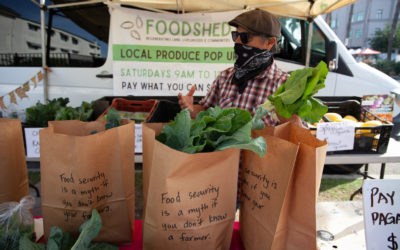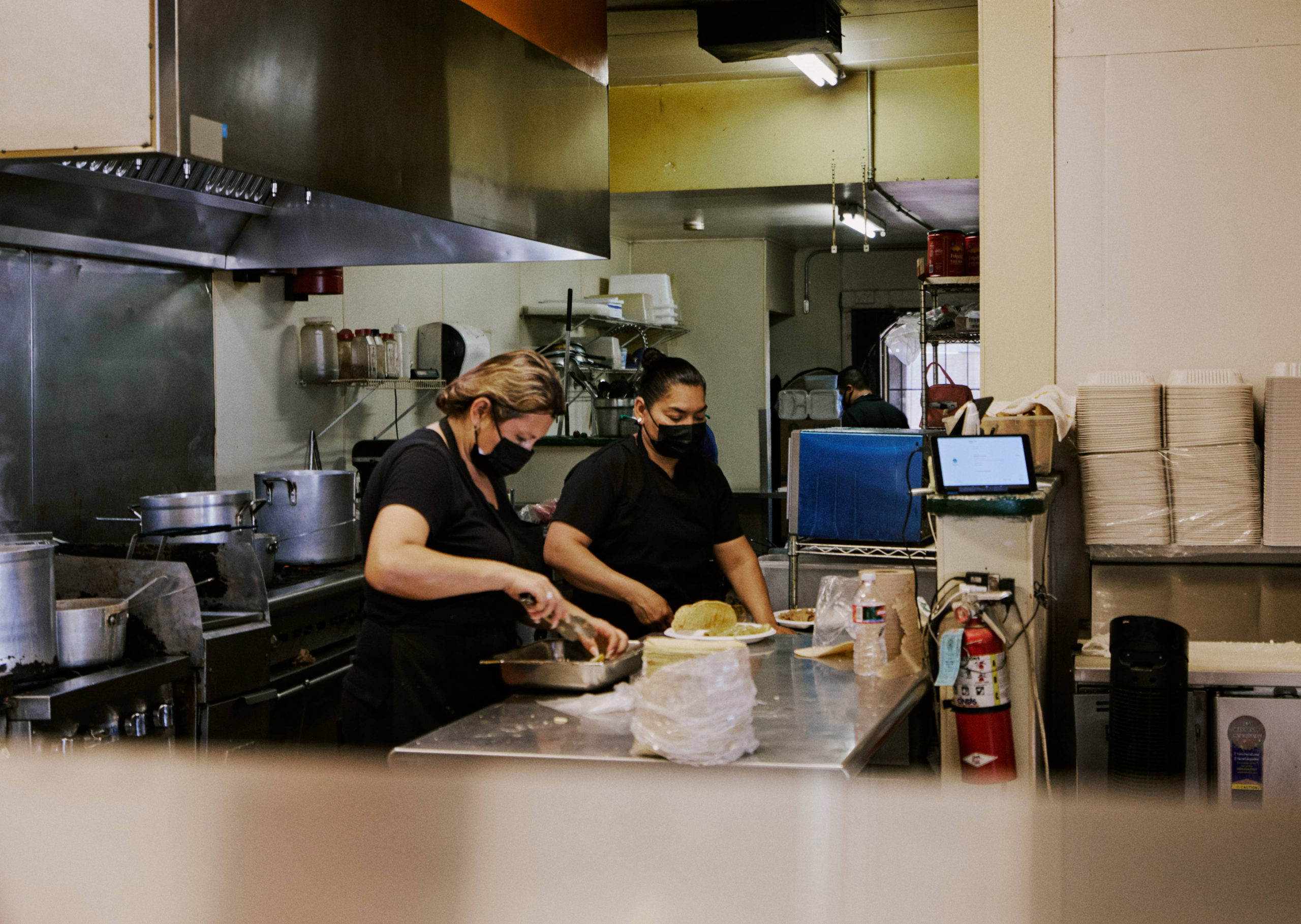Becoming a subscriber to Foodshed’s Fresh 5 program—a weekly distribution of fresh, seasonal produce, grown by the small farmers who make up the Foodshed cooperative—means you’re in for two surprises with every delivery. One is the produce itself: an ever-changing...
Objective 4
Elevate Wages and Working Conditions, and Improve Career Pathways
Introduction
Essential but often invisible, food system workers nourish us on a daily basis. Not only do they grow, raise, catch, and produce food, they also package, process, store, stock, sell, and deliver it. They take orders, prepare food, serve meals, and clean up messes. Hailed as heroes and “essential workers” at the start of the COVID-19 pandemic, food system workers literally feed the nation, keep the lights on at our favorite places, and witness life’s milestones and crises from the frontlines.
The majority of food system workers are people of color and immigrants, and receive significantly lower wages than those working in White-dominated occupations. Food system jobs are often perceived as undesirable and have been devalued for years. Despite a long and rich history of organizing efforts among workers, jobs in the food system fail to offer economic security, adequate protections, and career mobility. Rights to organize are unprotected and participation in unions is actively discouraged. These conditions often perpetuate a state of vulnerability for workers across the food system.
Despite being acknowledged as essential, many food system workers feel expendable. The COVID-19 pandemic has amplified existing challenges for food workers, including low wages, limited benefits, inadequate workplace protections, heightened food insecurity, and increased threats of detention.
Chapter Summary
Wages for workers have remained stagnant in the United States for the past four decades while wages for the top 1% have steadily increased.
The earnings of the bottom 90% of U.S. wage earners grew by only 24% over the past 40 years, while the top 1% of wage earners saw a 158% increase and the top 0.1% of wage earners experienced a 341% increase.
Women and BIPOC communities have been disproportionately impacted by rising wage inequality and wage stagnation.
The gender and racial hourly wage gap has barely moved over the past 20 years.
Food system workers experience the lowest wages of any other category.
Nationally and in San Diego County, food workers have the lowest median hourly wages ($13.15) of any major occupational category. Most food system wages do not provide an adequate standard of living.
Most food system jobs have limited benefits and workplace protections.
Food service workers consistently ranked the lowest compared to all other occupational categories in terms of the number of workers having access to retirement benefits, healthcare benefits, paid holidays, paid sick leave, paid vacations, paid personal leave, paid funeral leave, paid military leave, and paid family leave.
Opposition to unions has increased over the years and consequently, the number of unions have decreased.
Weak protections from the National Labor Relations Board, union busting, and anti-union campaigns have all played a prominent role in the decline of unions.
Immigrants—documented and undocumented—play an essential role in our food system.
There are 3.8 million immigrants making up more than one in five food system workers. In California alone, 42.5% of immigrants work in the food system. Farmworkers from Mexico comprise 69% of total farmworkers in the country.






